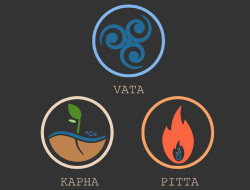There’s No ‘-itis’ In Ayurveda
Western medicine likes to have a name for every ailment, and for every ailment there is generally a set of drugs that the western doctor is trained to prescribe for the condition. Medical terminology is not unique to western medicine; even Sanskrit has long words which, when split into syllables, can describe the signs and symptoms of illnesses. Ayurveda, however, has quite a different approach when it comes to diagnosis, and it manages to survive without recourse to the naming of conditions. It also approaches the prescribing of medicines in a totally different way.
Basic to Ayurvedic medicine is the vital principle of ‘biological individuality’. There is nothing unscientific about this, as our bodies are composed of the same five elements as everything else in the universe – the ancients recognised these as earth, water, fire, air and space. Ayurveda sees the three ‘doshas’, Vata, Pitta and Kapha as combinations of these elements, and illness is perceived to be caused by an imbalance in these doshas, generally caused by dietary and lifestyle factors. If a gardener notices that his plants are sick he will first consider the environmental conditions and the mineral status of the soil. Giving the condition a name is not likely to be high on his list of priorities
Similarly, the Ayurvedic practitioner on being consulted by a patient with a specific set of symptoms will not be concerned with supplying a name for the patient’s condition. The physiology of the individual’s sickness and of their organs will be the primary consideration, and based on this knowledge appropriate medicines can be selected to treat the condition. For these to be effective the practitioner will also have to understand the physiology of the chosen herbs and they will be blended in accordance with the individual’s unique needs. One medicine can be effective in treating any number of different illnesses, without recourse to nomenclature.
A patient who suffered from panic attacks was recently taking various medications and when the Ayurvedic medicine Amalaki was introduced she reported a bad reaction. I explained to her that Amalaki had no specific side-effects and suggested that she might take grape juice alongside the medicine. As she had none available I suggested orange juice as an alternative, and when she took this the side-effects immediately subsided. The Amalaki, being a very strong antioxidant, had clearly produced too much energy and her body was not able to channel this effectively. I believe this to be due to the contraction of the lung cells.
A faithful adherence to the basic principles of Ayurvedic diagnosis and prescription makes it possible to provide effective medicine for any condition, regardless of its name.

*Discover holistic healing with a complimentary phone or video consultation from our expert Ayurvedic practitioner. Start your path to better health today!*























